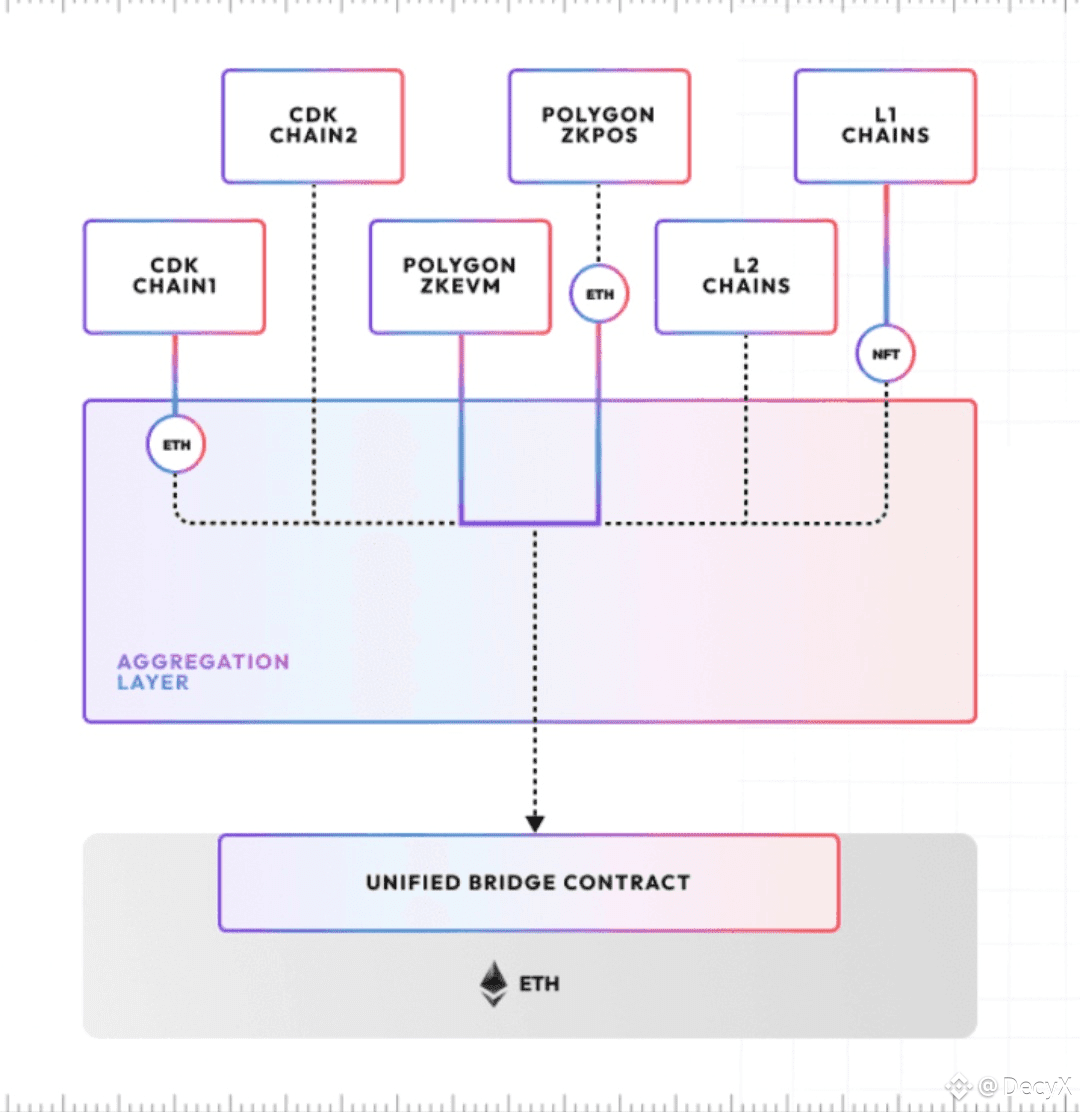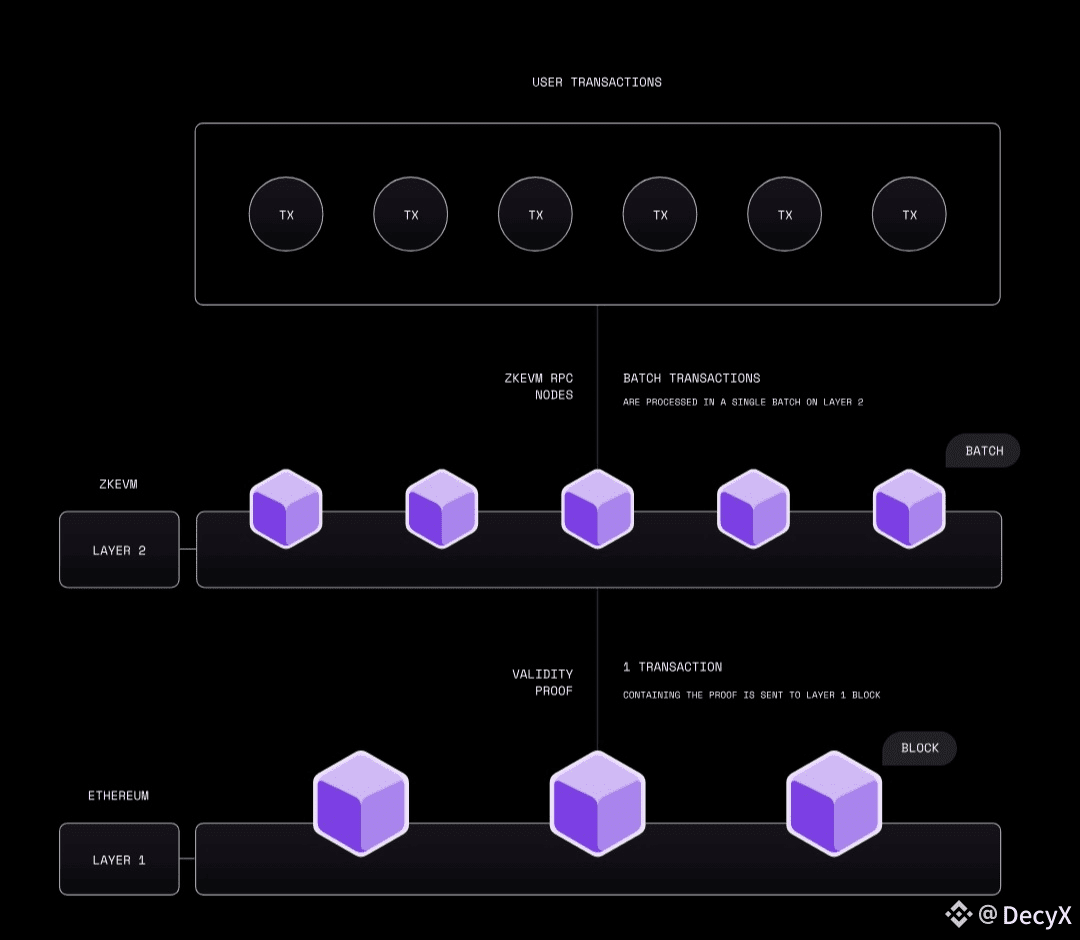The blockchain world has always pursued one goal, true scalability without compromise. Polygon stands as one of the most successful answers to that pursuit, evolving from a simple Ethereum scaling solution into a full-fledged ecosystem of modular, interoperable, and high-performance blockchains. By unifying diverse scaling technologies under one cohesive framework, Polygon has built the foundation for a scalable and interconnected Web3 economy. It is not just a network, it is the infrastructure powering the Internet of Value.
The Evolution of Polygon - From Sidechain to Ecosystem
Polygon began as the Matic Network, a sidechain built to reduce Ethereum congestion. But over time, it transformed into something far greater. Today, Polygon represents a multi-chain ecosystem built for Ethereum scalability, interoperability, and modular development. Its journey reflects the evolution of blockchain thinking, moving from single-layer solutions to a multi-dimensional framework where different technologies coexist to meet different needs. From sidechains to zero-knowledge rollups, Polygon has redefined what scalability means for Web3.
The Vision - Building a Unified Web3 Infrastructure
Polygon’s vision has always been clear, to bring mass adoption to Web3 by making blockchain technology fast, affordable, and developer-friendly. Its core philosophy revolves around interoperability, scalability, and accessibility. Rather than focusing on one chain or one scaling model, Polygon envisions a universe of interconnected blockchains working seamlessly together. It is building the infrastructure for a Web3 where users can move assets, data, and identities freely across chains, without friction or complexity.
The Polygon 2.0 Era - A Modular, Infinite Scaling Design
The introduction of Polygon 2.0 marks a historic leap forward. This upgraded architecture transforms Polygon from a collection of networks into a unified ecosystem built around the concept of modularity. Polygon 2.0 introduces a new coordination layer that connects multiple chains, all powered by zero-knowledge (ZK) technology. This modular design enables infinite scalability by allowing multiple blockchains to run in parallel, connected by a single shared layer of security and liquidity. It represents the future of blockchain scaling, one where performance expands infinitely without centralization.

The Power of ZK Technology - Trustless Scalability Redefined
Zero-knowledge technology is at the heart of Polygon’s innovation. ZK rollups process transactions off-chain, then post validity proofs back to Ethereum, ensuring both scalability and trust. Polygon has invested heavily in advancing ZK technology, acquiring and integrating leading ZK teams like Hermez, Miden, and Mir. These integrations allow Polygon to offer multiple ZK-based solutions, each optimized for different use cases. The result is a secure, trust-minimized environment capable of processing thousands of transactions per second while maintaining Ethereum-level security.
Polygon zkEVM - Bridging Ethereum and Next-Gen Scaling
Polygon zkEVM is one of the most transformative components of Polygon’s ecosystem. It replicates the Ethereum Virtual Machine (EVM) at a zero-knowledge level, ensuring full compatibility with existing Ethereum applications while providing massive scalability improvements. Developers can deploy their Ethereum-based projects on Polygon zkEVM without rewriting code, instantly benefiting from lower fees and faster transactions. This seamless compatibility strengthens Polygon’s role as Ethereum’s scalability backbone and accelerates the shift toward efficient, sustainable Web3 infrastructure.
Interoperability - Connecting Every Layer of Web3
Polygon believes that the future of blockchain is multi-chain. Through its unified architecture, it enables seamless interoperability across its various scaling solutions and even across other blockchains. Users and developers can move assets between Polygon networks, Ethereum, and beyond, without complex bridging processes. This interoperability transforms Polygon into a connective tissue for Web3, where cross-chain composability and liquidity mobility are the new standards for decentralized ecosystems.
Polygon Chain Development Kit - Empowering Builders Everywhere
At the core of Polygon’s ecosystem is its Chain Development Kit (CDK), a modular framework that allows developers to build custom blockchains powered by ZK technology. With the Polygon CDK, anyone can deploy their own Layer 2 or Layer 3 blockchain optimized for specific use cases, whether gaming, DeFi, social apps, or enterprise systems. Each chain inherits Ethereum security, Polygon liquidity, and interoperability by default. This transforms the Polygon ecosystem into a network of networks, where every project can scale independently yet stay connected to the broader Web3 universe.
Security and Decentralization - Built on Ethereum’s Foundation
Polygon’s commitment to security is deeply rooted in its relationship with Ethereum. Every Polygon network derives its security from Ethereum’s consensus, ensuring that even as the ecosystem scales, it maintains the highest levels of decentralization and trust. Through advanced ZK proofs and restaking concepts, Polygon continues to enhance its security model while minimizing cost and complexity. This approach guarantees that every transaction processed within the ecosystem maintains verifiable, Ethereum-grade security.
Tokenomics - The Role of POL in Polygon 2.0
With the transition to Polygon 2.0, the network introduces a new token, POL, as the next evolution of MATIC. POL is designed to serve as the universal token across all Polygon chains, enabling staking, governance, and network coordination. Validators stake POL to secure multiple chains, earning rewards for validating transactions across the ecosystem. This unified token model ensures that Polygon’s economic design is scalable, sustainable, and aligned with its modular network vision. It also empowers token holders with greater governance control, reflecting Polygon’s decentralized future.
Sustainability - Green Blockchain Innovation
Polygon has set industry standards for sustainability. It was among the first major blockchain networks to achieve carbon neutrality, offsetting all its emissions and committing to long-term carbon-negative goals. This focus on sustainability aligns with the growing demand for environmentally conscious Web3 development. By combining energy-efficient ZK technology with eco-friendly operations, Polygon ensures that scalability and sustainability advance together, creating a responsible foundation for global adoption.
Real-World Adoption - Powering Global Web3 Applications
Polygon’s scalability and EVM compatibility have made it the preferred infrastructure for hundreds of top-tier projects. From major DeFi protocols to NFT platforms and enterprise applications, Polygon’s reach spans across industries. Global brands such as Nike, Starbucks, and Reddit have all built on Polygon, using its technology to deliver real-world blockchain experiences to millions of users. These integrations demonstrate Polygon’s success in bridging the gap between Web2 and Web3, making blockchain accessible to mainstream audiences without compromising performance or security.
The Ecosystem Effect - Growing Through Collaboration
One of Polygon’s greatest strengths is its vibrant and collaborative ecosystem. Thousands of developers, partners, and institutions contribute to its continuous growth. Through initiatives like Polygon Labs and the developer grants program, Polygon actively supports innovation across DeFi, gaming, identity, and infrastructure. This ecosystem-driven approach creates a feedback loop of innovation, where every new project strengthens the network and enhances its utility. Polygon’s growth is not just technological but also community-driven, ensuring long-term sustainability and adoption.
Governance - A Step Toward Decentralized Coordination
Polygon’s transition to Polygon 2.0 introduces a more advanced governance structure. The community plays a key role in deciding protocol upgrades, treasury allocations, and network parameters. Token holders can propose and vote on decisions that shape the ecosystem’s evolution, ensuring that Polygon’s governance remains decentralized, transparent, and aligned with community interests. This participatory model reflects Polygon’s belief in shared ownership and collective innovation as the foundation for long-term progress.
The Future - Infinite Scalability and Unified Liquidity
Polygon’s modular, ZK-powered framework positions it at the forefront of blockchain evolution. Its approach to infinite scalability and unified liquidity sets the stage for the next generation of decentralized applications. As Ethereum continues to evolve, Polygon acts as its scalability layer, ensuring that every innovation in the Ethereum ecosystem benefits from Polygon’s speed, affordability, and interoperability. The future of Web3 will not be defined by isolated chains but by interconnected networks, and Polygon is the foundation upon which that interconnected future is being built.
A Bridge Between TradFi and DeFi
Polygon’s scalability and compliance-ready frameworks make it an ideal bridge between traditional finance (TradFi) and decentralized finance (DeFi). Institutions can deploy compliant, high-performance applications on Polygon while benefiting from the transparency of Ethereum. This convergence of institutional trust and decentralized efficiency could redefine the global financial infrastructure, creating new markets and investment opportunities powered by blockchain. Polygon’s architecture ensures that scalability does not come at the expense of security or regulatory readiness.
Education and Accessibility - Lowering Barriers to Entry
Polygon’s mission is not just to scale Web3 but to make it accessible. Through educational initiatives, developer bootcamps, and open-source resources, Polygon empowers new builders and users to enter the blockchain space with confidence. Its intuitive developer tools and user-friendly infrastructure ensure that anyone, from large enterprises to small startups, can deploy and scale on Web3. Accessibility is Polygon’s most powerful catalyst for mass adoption, ensuring that innovation is not limited to the technically elite.
Conclusion - Building the Foundation for the Internet of Value
Polygon stands as one of the most transformative forces in the blockchain world. From its early days as Matic to its current role as a modular, ZK-powered ecosystem, Polygon has continually pushed the boundaries of scalability, interoperability, and usability. With Polygon 2.0, it has created a blueprint for infinite scalability, uniting liquidity, security, and performance under a single ecosystem. As the Web3 landscape matures, Polygon is not just keeping pace with innovation, it is leading it. It represents the foundation for a decentralized, interconnected, and sustainable Internet of Value - a future where blockchain technology becomes as seamless and scalable as the web itself.